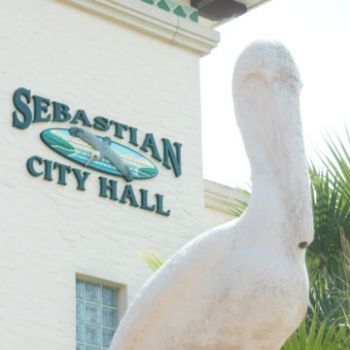
SEBASTIAN — The Sebastian City Council Wednesday night approved the Florida Friendly model fertilizer ordinance, sending the ordinance on to the second and final reading and public hearing in May. The council voted 4-1 to move the ordinance forward, with one member voting “absolutely not.”
“I’m a tree-hugger from way back,” Councilwoman Andrea Coy said, “and still am. We can help save the lagoon. Why wouldn’t we want to go the extra mile?”
Coy was the lone dissenter, asking the council to instead put more teeth into the ordinance by eliminating the phosphorous-containing fertilizers and requiring use of fertilizers that contain 50 percent slow-release nitrogen, as called for by many who spoke during public comment.
She said she was willing to negotiate on the “black-out” period many were calling for – a period of time during the summer when no fertilizer could be placed on lawns. Coy noted that if phosphorous were banned and they used slow-release nitrogen, there might be little benefit to enforcing a black-out period.
“We’re not Tampa; we’re not Clearwater…We’re Sebastian,” Coy said, imploring her fellow council members to lead the way in protecting the lagoon.
“I’m very concerned with the water quality in the lagoon,” Councilman Don Wright said, a sentiment voiced by others at the dais.
“This ordinance is better than nothing,” he said of the model before them. “I think it’s a step in the right direction.”
Wright, and others on the council, agreed that the ordinance could be supported with public education by providing information on the city’s government station, Channel 25, on Xfinity/Comcast.
Councilman Bob McPartlan agreed with Wright, adding that he is not a scientist but a risk assessor.
“Something’s better than nothing,” he said of the model ordinance.
He said that the city could continue monitoring the lagoon and if it appears to be declining after the ordinance is enacted, they could revisit it.
Councilman Richard Gillmor warned the council that if they were to toughen up the ordinance, they would need science to defend the changes and would have to be able to defend against challenge.
“This model is defensible,” he said.
Members of the public spoke on both sides of the issue, with many environmentalists and those who make a living in the lagoon supporting a stronger ordinance and those in the lawn care industry supporting the model.
Kristen Beck, of the Pelican Island Audubon Society, told the council that she has noticed the dying back of the seagrasses around Pelican Island due to algae blooms over the last five years.
“Now, it’s muck,” she said of what was once crucial seagrasses that serve as nurseries for various species of fish.
Beck urged the council to pass a stronger ordinance, such as that of Tampa Bay.
“Don’t wait for a catastrophic event,” she said.
“Everybody has the same goal, said Todd Josko, a representative of the Florida Turfgrass Association, noting that goal was protecting the water’s quality.
He said that the model is based on sound, proven science and would be adequate for protecting the lagoon.
In the end, the Sebastian City Council approved the model ordinance on the first of two readings. The second reading will be held on May 9. The public’s input will be taken again at that time.



